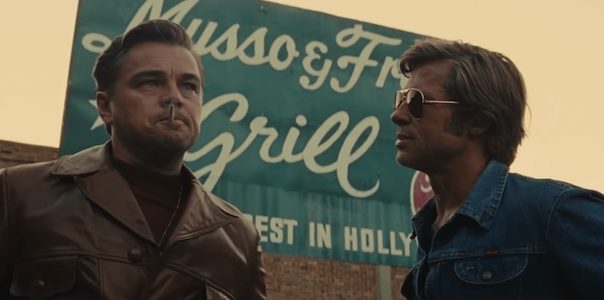
Catching Up: ‘Once Upon a Time in Hollywood’ ★★★½
By Bob Bloom
Often times, Hollywood was referred to as the “Dream Factory” because the stories they spun for the public were like fairy tales because mostly everyone in films — despite what obstacles they had to surmount — lived happily ever after.
Movies were — and are — places where ordinary mortals like you and I can escape to far-off lands, the past, the future or even other galaxies.
And Quentin Tarantino’s “Once Upon a Time in Hollywood” taps into our psyche about the movies.
The film is set in 1969, a crossroads year for the movie industry and the nation. Society, represented by the hippie culture, is growing. In Hollywood, the studio system is disintegrating.
After all, 1969 was the year of both “Midnight Cowboy,” which went on to win three Academy Awards — best picture, director and adapted screenplay — and “True Grit,” for which John Wayne won his best actor Oscar.
It is in this environment where we meet actor Rick Dalton (Leonardo Di Caprio) and his best friend and stuntman, Cliff Booth (Brad Pitt).
In the late 1950s, Dalton was the star of a popular TV Western series, one of the dozens that proliferated the airwaves in that era. Since the show’s cancellation, he has starred in a couple of B-movies and guest-starred on various other TV shows — mostly as the villain.
Despite Booth’s constant encouragement, Dalton is seeing his star fading.
For the most part, “Once Upon a Time in Hollywood” is literally a sunny movie — and Tarantino takes great pleasure in scenes when Dalton and Booth, either together or solo, drive around Los Angeles and Hollywood.
Tarantino makes us feel like tourists taking in the sights — the big movie houses, the exclusive restaurants and the secluded areas where the rich and famous live — far away from us regular folks.
Underneath all this brightness, a darkness is bubbling, just waiting to erupt. Its center is at the Spahn Movie Ranch, where a bunch of hippies — mostly women — live under the spell of Charles Manson.
Manson is only briefly seen in the film, yet his presence is felt through a majority of its 161-minute running time.
Tarantino takes us behind the scenes of such TV shows as “Lancer” and “The Green Hornet,” where Booth has a run-in with a cocky Bruce Lee, who played Kato on the series.
“Once Upon a Time …” is a story of friendship. The backbone of the saga is the relationship between Dalton and Booth. The bright disposition and self-sufficient attitude of the down-on-his-luck stuntman, who has become Dalton’s driver and around-the-house fix-it man, belies a steely, no-nonsense individual who emits a bravado that he can — and does — back up with his fists.
Dalton is finally convinced by his agent, a cheery Al Pacino, to accept an offer to make spaghetti Westerns in Italy as a way of reviving his career. Booth goes along, of course, as companion and stuntman.
“Once Upon a Time …” is one of Tarantino’s most-assured works, and it showcases his affection and love for the film industry.
Another of the film’s assets is the performance of Margot Robbie as Sharon Tate. Though her screen time in limited and her dialogue is minimal, she brings an innocence and giddiness that adds luster to the project.
The movie takes a darker turn upon their return to Hollywood from Italy, but all I will say is that various plot threads converge, and the movie lives up to Tarantino’s title.
“Once Upon a Time in Hollywood” is simultaneously sprawling yet intimate, giving us a nostalgic picture of a time gone by and a fabled land of hopes and dreams.
I am a founding member of the Indiana Film Journalists Association. My reviews appear at ReelBob (reelbob.com) and Rottentomatoes (www.rottentomatoes.com). I also review Blu-rays and DVDs. I can be reached by email at bobbloomjc@gmail.com or on Twitter @ReelBobBloom. Links to my reviews can be found on Facebook, Twitter and LinkedIn.
ONCE UPON A TIME IN HOLLYWOOD
3½ stars out of 4
(R), graphic violence, language, drug use, sexual references